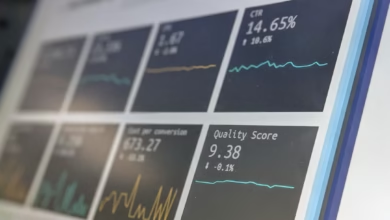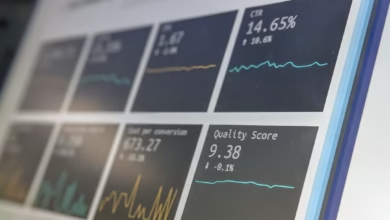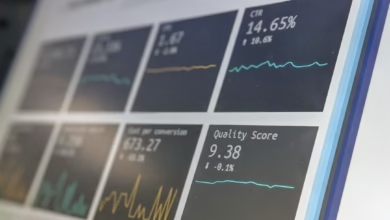Mastering CFD Trading: Strategies and Insights for Successful Speculation on Price Movements

CFD trading, or Contract for Difference trading, has gained immense popularity among traders looking to speculate on price movements without the need to own the underlying assets. This financial derivative allows individuals to engage in various markets such as stock trading, forex trading, and commodities trading, offering the flexibility to trade on price fluctuations in real-time. Whether you are interested in day trading, swing trading, or even more advanced strategies like algorithmic trading and high-frequency trading, CFD trading provides a unique opportunity to leverage market movements.
In this comprehensive guide, we will delve into the intricacies of CFD trading, exploring effective trading strategies and the essential role of risk management. By understanding both technical and fundamental analysis, traders can enhance their outcomes and navigate the complexities of the financial markets with confidence. Additionally, we will discuss the psychological aspects of trading, which play a critical role in successful trading practices. Join us as we uncover the key elements of CFD trading and equip you with the knowledge to thrive in this dynamic trading environment.
- 1. Understanding CFD Trading: A Comprehensive Guide to Speculating on Price Movements
- 2. Key Strategies for Successful CFD Trading: From Day Trading to Swing Trading
- 3. Risk Management in CFD Trading: Leveraging Technical and Fundamental Analysis for Better Outcomes
1. Understanding CFD Trading: A Comprehensive Guide to Speculating on Price Movements
CFD trading, or Contract for Difference trading, offers a unique approach to speculating on price movements without the need to own the underlying asset. This derivative trading method allows traders to profit from both rising and falling markets, making it an attractive option for various trading strategies, including day trading, swing trading, and scalping.
Understanding CFD trading begins with grasping the fundamental concept of derivatives. Derivatives are financial instruments whose value is derived from an underlying asset, such as stocks, commodities, indices, or cryptocurrencies. In CFD trading, you enter into a contract with a broker, agreeing to exchange the difference in the price of the asset from the time the contract is opened to when it is closed. This means that you can speculate on price movements without actually owning the asset.
One of the key features of CFD trading is the use of leverage, which allows traders to control larger positions with a smaller amount of capital. While this can amplify profits, it also increases the potential for significant losses. Therefore, effective risk management is paramount. Traders must implement strategies to protect their capital, such as setting stop-loss orders and diversifying their portfolios across different markets, including forex trading, commodities trading, and index trading.
In addition to risk management, successful CFD trading relies heavily on market analysis. Traders employ both technical analysis and fundamental analysis to inform their decisions. Technical analysis involves studying historical price movements and chart patterns to forecast future price actions, while fundamental analysis focuses on economic indicators and news events that may impact the financial markets.
Trading psychology also plays a crucial role in CFD trading. Maintaining discipline and managing emotions can significantly influence trading outcomes. Traders need to be aware of their biases and develop a robust trading plan that aligns with their goals and risk tolerance.
As the landscape of online trading continues to evolve, platforms offering CFD trading have integrated features such as copy trading and social trading, enabling less experienced traders to learn from seasoned professionals. Additionally, algorithmic trading and high-frequency trading strategies are becoming increasingly popular among traders seeking to capitalize on micro price movements in real-time.
In conclusion, CFD trading presents a versatile avenue for speculating on various markets, including stock trading, energy trading, and crypto trading. By understanding the mechanics of CFD trading, employing sound trading strategies, and focusing on risk management, traders can navigate the complexities of the financial markets and enhance their potential for success.
2. Key Strategies for Successful CFD Trading: From Day Trading to Swing Trading
When it comes to CFD trading, having a well-defined strategy can significantly enhance your chances of success. Two popular strategies among traders are day trading and swing trading, each offering distinct advantages depending on your trading style and market conditions.
Day trading involves making multiple trades within a single trading day, capitalizing on small price movements in assets such as stocks, forex, and commodities. Traders using this strategy must be adept at technical analysis, closely monitoring price charts, and market trends to make quick, informed decisions. Effective risk management is crucial in day trading, as positions are often leveraged, increasing both potential gains and losses. Tools like algorithmic trading and high-frequency trading can also aid day traders in executing trades with precision and speed.
On the other hand, swing trading focuses on capturing price movements over a few days or weeks. This strategy allows traders to take advantage of short- to medium-term trends without the constant monitoring required in day trading. Swing traders often employ a combination of fundamental analysis and technical analysis to identify potential entry and exit points. By analyzing market conditions and using risk management techniques, they can hold positions longer, reducing the stress associated with rapid trading decisions.
Both strategies can be implemented across various markets including crypto trading, index trading, and options trading. Additionally, social trading and copy trading platforms enable traders to follow and replicate the strategies of experienced traders, making it easier for beginners to navigate the complexities of CFD trading.
Regardless of the chosen strategy, traders must prioritize trading psychology. Understanding how emotions affect decision-making can help mitigate risks and improve overall trading performance. Whether engaging in derivatives trading or energy trading, a comprehensive approach that includes a focus on trading strategies, market analysis, and robust risk management is essential for achieving long-term success in CFD trading.
3. Risk Management in CFD Trading: Leveraging Technical and Fundamental Analysis for Better Outcomes
Risk management is a crucial aspect of CFD trading, enabling traders to navigate the complexities and volatility of financial markets effectively. By leveraging both technical and fundamental analysis, traders can make informed decisions that enhance their trading outcomes across various markets, including stock trading, forex trading, and commodities trading.
Technical analysis involves examining historical price movements and trading volume to identify patterns and trends. This approach helps traders develop trading strategies that can indicate potential entry and exit points. For instance, day trading and swing trading often rely heavily on technical analysis to capitalize on short-term price fluctuations. Indicators such as Moving Averages, Relative Strength Index (RSI), and Fibonacci retracement levels can provide insights into market sentiment and help traders set appropriate stop-loss orders to mitigate risk.
On the other hand, fundamental analysis focuses on economic indicators, news events, and financial health of assets. By understanding the underlying factors that influence price movements, traders can better anticipate market trends. This is particularly relevant in forex trading and energy trading, where geopolitical events and economic data releases can lead to significant market volatility. Incorporating fundamental analysis into risk management strategies allows traders to adjust their positions and leverage appropriately, ensuring they are not overexposed in unpredictable market conditions.
Combining both analysis methods enhances overall risk management. For example, a trader might use technical analysis to initiate a CFD position in an index trading scenario while keeping an eye on fundamental news that could affect market sentiment. Proper leverage trading ensures that while potential profits increase, the risks are still manageable, allowing for margin trading without undue exposure.
Moreover, understanding trading psychology is essential for effective risk management. Traders must develop the discipline to stick to their trading strategies, even in volatile markets. This is particularly important in high-frequency trading or scalping strategies, where quick decisions can significantly impact profitability.
In summary, effective risk management in CFD trading hinges on the integration of technical and fundamental analysis. By employing sound trading strategies and maintaining discipline, traders can enhance their decision-making processes, ultimately leading to better outcomes in their trading endeavors, whether they are engaged in algorithmic trading, copy trading, or other forms of online trading platforms.
In conclusion, CFD trading presents a dynamic opportunity for traders to speculate on price movements without the need to own the underlying asset. As we explored in this article, understanding the fundamentals of CFD trading is essential for anyone looking to navigate the complexities of online trading platforms. By employing key strategies such as day trading, swing trading, and even high-frequency trading, traders can optimize their approach to capitalizing on market fluctuations.
Moreover, effective risk management is crucial when engaging in derivatives trading, allowing traders to leverage both technical and fundamental analysis for informed decision-making. Whether you are interested in stock trading, forex trading, or commodities trading, understanding trading psychology and maintaining disciplined trading strategies will significantly enhance your trading outcomes.
As you venture into CFD trading, remember that continuous learning and adaptation are vital. The market is ever-evolving, and staying abreast of trends and employing strategies like copy trading or social trading can provide valuable insights. Whether you're interested in energy trading, index trading, or exploring the realms of crypto trading and options trading, a well-rounded approach to market analysis will empower you to navigate the exciting world of CFD trading successfully. Embrace the journey, and may your trading endeavors be both profitable and fulfilling.
References:
[Please insert your references here in APA format]




